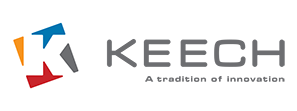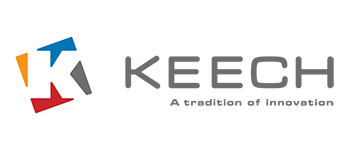By Herbert Hermens, CEO of Keech Australia
Booming mining industries in countries like Mongolia and Kazakhstan represent strong opportunities for Australian rail infrastructure manufacturers – but only if they can deliver a competitive offering.
With labour costs up to four times higher than in other countries, that means Australian manufacturers need to focus on productivity, consistency and quality to be able to compete.
Where the opportunities lie
Most of the talk about overseas opportunity has centred on China and South East Asia, but there is a growing and untapped market in developing nations such as the Eastern Bloc countries of Central and Eastern Europe.
As the mining industries in those countries shift from construction to production, there is an increasing need for transport infrastructure, including freight and passenger rail.
In Kazakhstan, rail is required to export goods into neighbouring Russia, China and central Asia.
By 2015, the country expects to have four new freight traffic lines operational. This will reduce travel time between the port of Aktau (the country’s only sea port) and the Chinese border by two days, ensuring more efficient and timely delivery of exports, while reducing the associated costs.
A transnational rail project is currently underway to connect Kazakhstan to its southern neighbours, Iran and Turkmenistan, in addition to providing freighting routes to the Persian Gulf. By 2020, modernisation works on over 14,000 kilometres of existing track are expected to be completed, along with the acquisition of new passenger/freight cars and locomotives. Officials expect the track works to increase traffic speed by 22 per cent for freight trains and 82 per cent for passenger trains.
By 2030, infrastructure investment requirements in Kazakhstan are expected to total more than A$8bn for railways. That’s a lot of opportunity for Australian manufacturers, as long as we can remain globally competitive.
Despite the Mongolian government pumping investment into infrastructure to support these mining projects, transport infrastructure is still severely lacking and Australian manufacturers have the opportunity to help develop this infrastructure.
Meanwhile, Mongolia has increasingly come to the attention of investors and manufacturers in Australia and across the world. One of the most resource-rich countries in the world, Mongolia has a booming mining industry, but is lacking the infrastructure and investment to support it.
It might surprise you, but over 150 Australian companies already have a presence in Mongolia, and there is room for much more, as they are expected to have a 14 per cent GDP growth rate into 2020.
Price, value and productivity
Opportunities are there for the taking for Australian industry – but there’s a perception in the market that Australian businesses are unable of capitalising on these opportunities because they cannot compete on price.
This notion has driven some manufacturers to send production off shore, while others have simply accepted they can’t get into these markets.
The reality is that our industry does have to be price competitive. The bottom line will always be a key factor in any business. But having the lowest price is not the be all and end all of the matter and Australia can certainly deliver to a world-class quality standard.
This means adjusting existing structures to maximise efficiency of invested resources. It is important to utilise fixed capital on a more consistent basis and introduce a flexible labour force to slot into that. Manufacturers need to think outside of the box in order to overcome cost barriers without decreasing labour or sending it off shore. This could be anything from adjusting foundry production hours or daily procedures to investing more revenue in research and development or staff training.
Increasing Capability
To meet growing demands and to keep costs as low as possible, manufacturers must continue to grow their capacity by improving manufacturing procedures. But outputs must meet integrity and quality standards in order to consistently supply to international markets.
There are new paradigms in the rail manufacturing industry that bring lower production costs and higher efficiency. Many component manufacturers worldwide, including Keech Australia, have introduced smaller foundries where they can test new processes and invest in new technology prior to implementing at a larger, main site. This helps to keep costs down, but also assures the manufacturer is capable of serving the global market.
Staff capability is one of the largest factors in increasing production efficiency; therefore, to increase efficiency, a logical step would be to increase the capacity of the people by investing in training and improved labour practices. To become a leader in the global rail industry, Australian manufacturers need to find ways of dealing with barriers such as labour costs and develop innovative ways to increase the number of people we employ while making capital and labour work better together.
We are always hearing about how our wages are much higher than elsewhere. And they are. That’s a fact. But what do we do about it?
It’s possible to protect people’s wages and conditions and still run a profitable business. If workers in other countries get paid a quarter of what ours do, our people have to be four times as efficient. Achieving that result relies on both capital and labour investments such as technologies and procedures.
Labour prices are not where we should focus. It is the effective price that matters – being able to use labour most effectively.
That might mean being operational 24/7, 365 days a year. That level of flexibility needs to have the ability to meet global demands whilst managing costs.
Investing in Innovation
It is essential for Australia to invest in capital and lead with the world’s best equipment, most skilled labour force, and efficient processes – to other countries, these are our calling cards. This is not an area where money should be saved or corners cut.
Investing in research and development in not only new products, but also process improvement and staff training, is essential to the Australian market as the most impactful export we have to service the international rail boom is our expertise, but we need to continue to develop and improve our skill sets and knowledge. As competing countries are constantly developing their staff and systems, Australia is being forced to change and we can either remain stagnant, or rise to the occasion and meet them on an even playing field.
Businesses need to dedicate a set proportion of revenue to Research and Development, not only of new products, but also process development, including shipping and transportation outside of the rail industry. At Keech, we invest more than 7.5 per cent of our revenue into R&D.
Australian suppliers should be reaching out to emerging countries to support their demand. We also should be working to find the timeliest and most cost effective freight routes, and while this remains a challenge, it is necessary to explore all potential transport methods and international routes. This may not directly save on export costs, but it could potentially lead to a reduction in delivery times, which would assist with capability to meet demand.
We are already competing in a global market and because there is a resistance to change, we have experienced a economic downturn. With a commitment to adapting and competing on a global scale, Australian manufacturers can turn this around and enjoy a positive future. The opportunities are there – it’s up to us to take them.
Keech Australia has been designing and manufacturing high integrity steel castings for nearly 80 years. Its rolling stock components and custom casting products are manufactured to Australian and ISO 9001 quality standards and their products are supported by sales offices in all Australian states. Keech also has established a sales office in Chile S.A. to support products supplied to the South American mining industry. Business Review Weekly last year named Keech regional Australia’s “Most Successful Privately Owned Business”. It exports around 20 per cent of its products to markets including Canada, Kazakhstan, Japan, the Middle East and elsewhere.
About Herbert Hermens – Chief Executive Officer
Herbert was appointed as Keech’s third chief executive officer in 2008, succeeding Barry Ellis, who retired after 25 years with the company, including 10 as CEO.
Herbert is responsible for managing all aspects of the company. He is also a member of the board along with David and Garth Keech.
A widely experienced executive, Herbert’s career has included international operating responsibility extending from sales and marketing management and general management to managing director roles in the industrial, professional and consumer products industries.
Some of Herbert’s career achievements include entering new distribution channels, positioning organisations for sustainable growth and launching new products as well as developing strong business links with key distributors, suppliers and end users.
Herbert is based at Keech’s head office and foundry in Bendigo.




